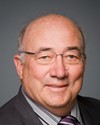Page 16 deals with moral rights. Following what my colleague said about economic and neighbouring rights, moral rights have only been granted to authors of works in Canada. No one holds any neighbouring rights. For instance, no artist, no producer of a sound recording, no radio broadcaster holds any moral rights in Canada. Only authors hold moral rights, which can be divided into three categories: the right of attribution, the right of integrity and the right of association.
The right of attribution is the right to be associated to one's work, to be identified as the author of a work. The right of integrity is the right to prevent anyone from modifying, altering or changing a work in a prejudicial way. I am emphasizing this term because if the change is not prejudicial to the author, no recourse can be applied. As for the right of association, it is meant to prevent any prejudicial use of a work by associating it with some product, service or cause.
In Canada, there was a cause célèbre involving an author who had created geese that were displayed at the Toronto's Eaton Centre. Now during the Christmas season, the Eaton Centre had decided to tie little red ribbons to the little geese. These red ribbons that were added were deemed to go against the author's moral right. This is an illustration of how this right is implemented.
Page 16 gives criteria for protection, which are the basic requirements for copyright protection. This deals with originality; of course, the work must be original. A mere copy of reproduction of someone else's work would not satisfy the standard of originality. Fixation of the work is also required in order to benefit from protection pursuant to the Copyright Act. We must note that protection of a work arises automatically upon its creation. This is very different from patents, for instance, where the potential patent holder must apply to the patents' commissioner who, after studying the file, will say whether this inventor can become the patent holder for a given invention. In the copyright field, as soon as the standard of originality has been met and the work has been fixed, protection arises, without any need for any authority to declare whether or not this work is truly a work as defined by the Copyright Act.
In Canada, copyright can be registered. Registration is optional. The creation of a work is in itself sufficient for its protection under the legislation. However, if someone wants more security, he can register his copyright with the Intellectual Property Office. Let us also note that it is unnecessary to mark a work with a “c” symbol in a circle to protect it. Here again, we see that the originality of a creation suffices under the Copyright Law.
Who is the author of a given work? It is the person who created this work, for example someone who wrote the lyrics of a song, or someone who has created a computer program. However, there are exceptions to this legislation. For instance, in photography, the author is the one who owns the original plate, or what is sometimes called the “negative”. But what happens to copyright in a digital setting where there are no more plates or negatives. In such cases, the owner of the camera is the author of the photographic work.
Who is the copyright holder? Once again, generally, the copyright holder is the author. However, the legislation has provided for situations where the first copyright holder could be someone else, tout the extent that there is no agreement to the contrary. Let me explain.
When working in an employee-employer relationship, the employer would be the first copyright holder for any document prepared by his employee, to the extent that certain criteria are followed, specially regarding the employer's supervision of the work done by his employee. If there is no agreement to the contrary, the employer would be the first copyright holder.
When dealing with patents, agreements to the contrary frequently occur, but normally, when the work is done in an employer-employee relationship, the employer would be the first copyright holder.
As for works prepared or published under the direction of the Crown — like the work done by consultants for the Crown —, the Crown would be the copyright holder.
There is another exception. In the case of photographs and portraits, the person who commissioned the photo is the first copyright holder. If, for instance, you get married and you ask a photographer to take your wedding pictures, as you are the one to order the photos from the photographer, you would be the first copyright holder. We must note that in fact, photographers often sign agreements to the contrary. Photographers very frequently want to be the first copyright holders for the photos, but even when that happens, we must know that the legislation is very clear regarding the fact that the one who commissioned the photo is the first copyright holder.
Let us go on to the duration of protection for works. In general, works remain protected for 50 years after the author's demise. This means 50 years beyond the author's life span. There is a technical detail; we should know is someone passes away on September 25, 2006, the protection will continue to the end of a calendar year. Thus, the 50 year period would begin on January 1st, 2007. When the period of protection expires, the work comes into the public domain. This is a standard formula for copyright. When the work is in the public domain, anyone who wants to use this work can do so without asking permission from the author or from the copyright holder.
But we must be careful, because this rule is not as simple as it may appear. For instance, in the case of Beethoven, who died a very long time ago, his work has been in the public domain for a very long time. But if, on the other hand, a producer of song recordings, or a symphony orchestra, for instance, were to make a recording of Beethoven 9th symphony, in such a case, neither Beethoven or his succession would have any rights regarding that work, the producer of the song recording who has done the work needed to produce this new version of the work would benefit from protection. Likewise, all the musicians, as artists, could be protected by the Copyright Act, for a 50 year period.
I mentioned other matters, namely neighbouring rights. Protection is somewhat shorter for artists and producers, it covers 50 years after the first fixation of the audio recording or after the execution, if it has not been fixed, or, for audio recordings, 50 years after fixation. Of course, for audio recordings, individuals are very rarely involved. Most cases involve corporations, and the protection lasts for 50 years. Thus, neighbouring rights are more restricted and less protected than the rights of authors.





